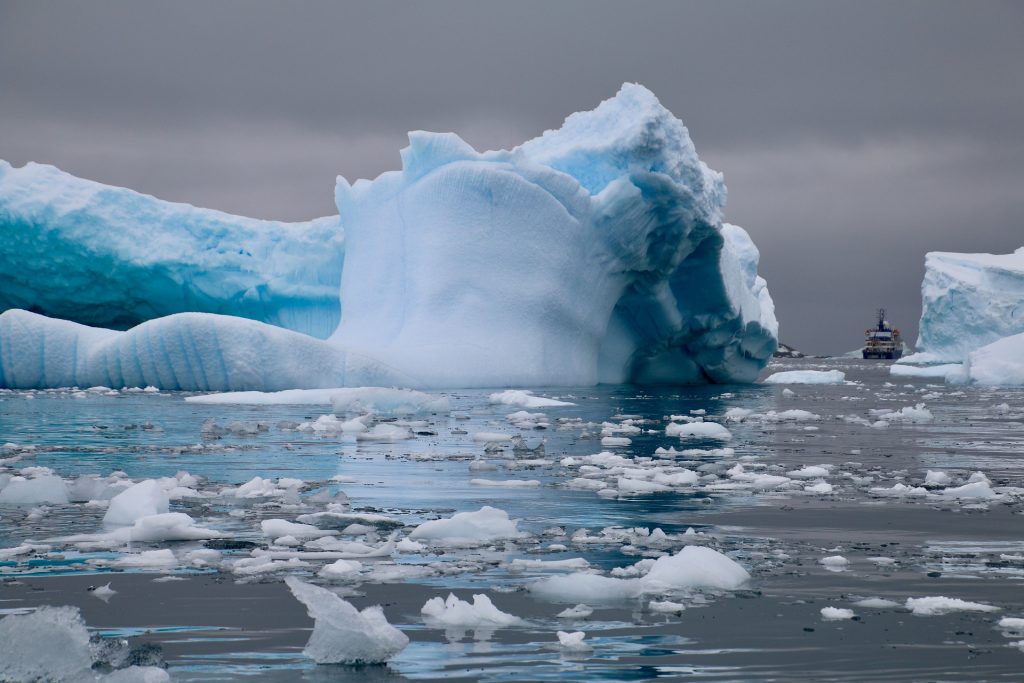This review of Exhibits 13 and 14 was posted as “Part 4 – Fingerprints of the Gods, Review of Exhibits 13-14.” on April 28, 1996 to sci.archaeology. I have edited the original post for spelling and conversion to HTML format.
Introduction – The Problem
…..Long introduction omitted……
Exhibit 13
In Exhibit 13, FOG cites an article titled “INTERACTIVE IN ANTARCTICA: Students Link With South Pole Scientists” from the Wednesday, November 23, 1994 issue of “USA Today.” This article talks about a live remote broadcast from Antarctica in which Mrs. Elizabeth Fenton, a 17-year-old graduate of the Chicago school system, will use U.S. Geological Survey data to reposition the copper marker designating the geographic south pole of the Earth. According to the article, the reposition is necessary because of annual slippage of the ice sheet.
Referring to this article FOG asks the following questions:
1. It is either just the ice sheet that is slipping or is the entire crust of the earth in motion?
2. And, is this project documenting the continued geometrical acceleration of the rate of motion of the crust?
In Exhibit 13, FOG answers neither question directly. Rather, it talks about the convergence of prophesies and traditional beliefs that signals the coming of an epoch of unprecedented “turmoil and darkness.”
Nowhere in Exhibit 13 does FOG explain or give any proof of the comments made in this exhibit. Presumably, the reference to continued geometrical acceleration refers to the material discussed in Exhibit 12. As discussed in a previous post concerning Exhibit 11 and 12, the evidence that FOG offers for modern crustal displacement and its current acceleration either fails to exist or consists of movement related to processes not associated with either crustal displacement or continental drift.
In sharp contrast, the fact that the Antarctic ice sheets are actively moving by a variety of processes has been documented by innumerable papers in which it has been either indirectly or, even, directly observed and measured. These processes are active enough to have caused the need for the repositioning of the copper marker without having to call upon other, especially disproved processes, to account for the movement of ice within the Antarctic ice cap. Excellent summaries of how ice flows and moves when stacked high enough can be found in Sugden and John (1976) and Sharp (1988, Chapter 3).
Exhibit 14
In Exhibit 14, FOG quotes an eyewitness account of the January 17, 1994 Kobe, Japan Earthquake from the January 18, 1994 issue of The Guardian. This exhibit lacks any comments concerning how this account and the Kobe Earthquake relates to either crustal displacement or any of the other ideas the FOG advocates.
Regardless of what the point of Exhibit 14 is, the Kobe Earthquake presents no problems to any mainstream theory, i.e. continental drift or plate tectonics. The Kobe earthquake is a classic strike-slip earthquake where each side of the fault moves sideways. There is nothing unusual or anomalous about this earthquake (Ellsworth 1995, Kikuchi 1995).
References cited
Ellsworth, W. L., 1995, From California to Kobe. Nature. vol. 373, no. 6513, p. 388.
Kikuchi, M., 1995, A shopping trolley seismograph. Nature. vol. 373, no. 6544, p. 19.
Sharp, R. P., 1988, Living Ice: Understanding Glaciers and Glaciation. Cambridge University Press, New York.
Sugden, D. E., and John, B. S., 1976, Glaciers and Landscape: A geomorphological Approach. Edward Arnold, New York.
….signature omitted……
Version 4.0
Dec 18, 2001
Copyright © 1996-2002 Paul V. Heinrich All rights reserved.

